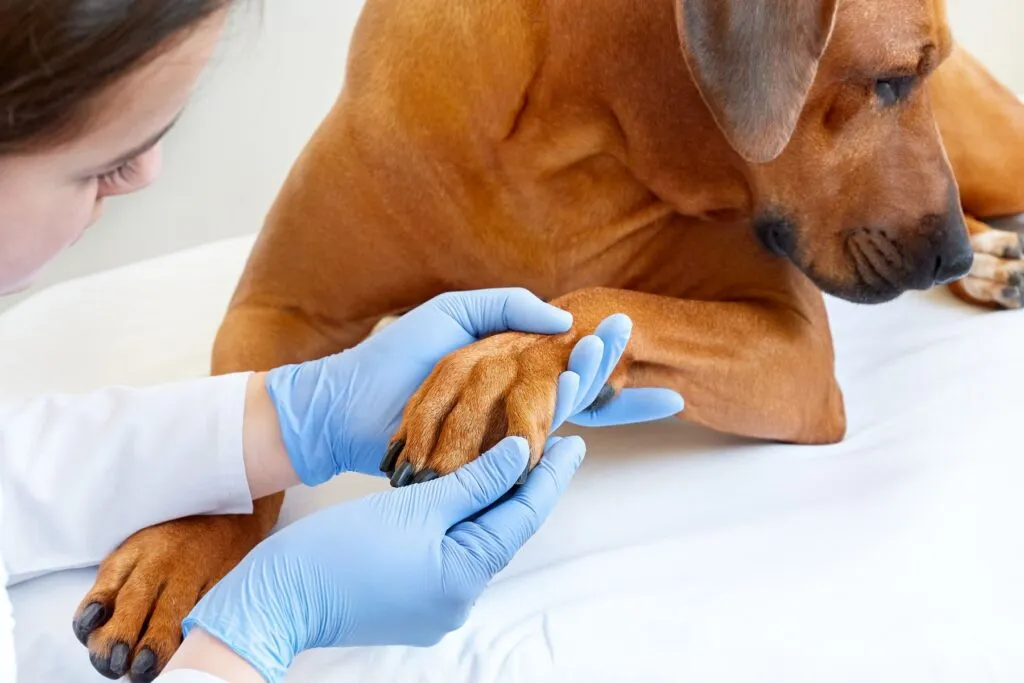If your dog has pododermatitis, treatment is necessary. Which treatment is needed besides supportive medications, such as anti-inflammatories or pain relievers), and regular wound care depends on the cause of the ailment.
Therefore, it’s essential to seek a vet’s evaluation if you suspect your dog has pododermatitis, even though diagnosis and treatment may take some time.
What to Do if the Dog Is Licking Its Paws Sore?
Licking is your dog’s natural response to pain and inflammation. However, this reflex must be avoided because the licking introduces germs, such as bacteria, into the wound, worsening the inflammation.
To prevent this, using aids such as cones, paw bandages, or dog boots is appropriate.
Targeted Treatment of the Underlying Condition
Once your vet has identified the trigger for the pododermatitis, they can treat it directly. Possible measures include:
- Surgical removal of foreign bodies
- Laser surgery to remove cysts
- Antibiotic treatment for bacterial infections
- Antihistamines for allergies
If Nothing Else Works
In very severe cases of pododermatitis in dogs, a so-called podofusion may be necessary: to prevent inflammation in the interdigital spaces, the vet surgically fuses together one or all the toes of the affected paw under anaesthesia.

